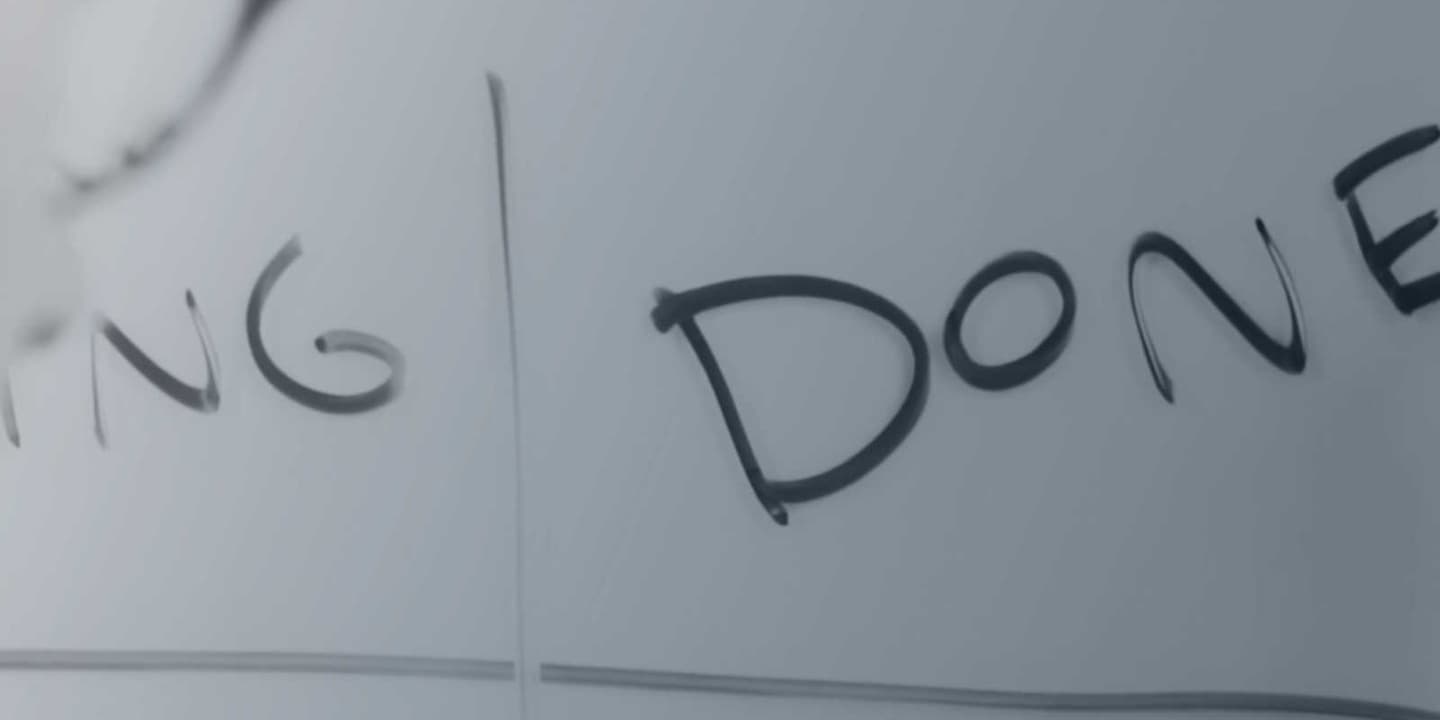It’s a new year – queue the resolutions to hit the gym, plan that vacation, or earn that promotion. Whether it’s a fitness goal, family or professional goal, an often-overlooked aspect of goal setting is how to organize them and keep yourself accountable.
We asked some of our consultants to share how they keep tasks and projects organized, whether it’s a family vacation, ambitions, or a big change initiative at work.
The ideas below borrow concepts and methodologies from Agile, which is essentially a way of approaching and breaking down work into manageable pieces, but can be applied to almost any task or project. Here are some simple steps to get organized and get more stuff done, while staying nimble in your approach and adjusting to whatever comes your way this year.
Don’t trust your memory
Why is it that despite the billions of neurons in our brains, the power to learn multiple languages, solve complex equations and memorize useless trivia, yet we can’t remember where we put our keys? This article offers a bit of an explanation:
“Although the brain contains detailed representations of lots of different events and objects, we can’t always find that information when we want it... if we’re shown an object, we can often be very accurate and precise at being able to say whether we’ve seen it before. If we’re in a toy store and trying to remember what it was that our son wanted for his birthday, however, we need to be able to voluntarily search our memory for the right answer—without being prompted by a visual reminder. It seems that it is this voluntary searching mechanism that’s prone to interference and forgetfulness…”
If there’s one thing you remember from this post, just “Don’t trust your brain for anything.” says Consultant Paul Edwards.
“Don’t trust your brain for anything.” — Paul Edwards
Adopt the right tools & methods
While a bad memory is the first fault, a lack of tools to keep you accountable is the second mistake that will inhibit your goals this year:
“The main thing that stops people from getting things done is not having a system in place to track yourself and whatever that work is that you need to get done,” says Propeller Director Bryan Rogers.
Rogers credits his high productivity mindset to the book “Getting Things Done” by productivity consultant David Allen. The book explores time management methods like “moving planned tasks and projects out of the mind by recording them externally and then breaking them into actionable work items.”
Another similar system we see consistently utilized behind the scenes to manage projects and day-to-day tasks is the Kanban board.
If you've never seen one, or heard of it, (chances are that you have), It's a way to visualize and reflect the work that's in progress, work that's coming down, and finished work.
“A Kanban board is one of the simplest and most powerful ways of managing work,” says Consultant Carl Terranova. “It came out of lean manufacturing, but it is also a very agile way of looking at work.”
“My whole life is managed through a Kanban board”, adds Rogers. How does a Kanban board work? Check out Part 1 of the Propeller Agile video series for a unique explanation.
“A Kanban board is one of the simplest and most powerful ways of managing work.” — Carl Terranova
For Consultant Ho’onani Andermann, organizing work starts with setting up a Kanban board every time she walks into a new client: “I immediately set up my own Kanban online so that I can keep track of the millions of things and prioritize them in the backlog and constantly reassess what has the most value that I need to be doing right now.”
While many traditional Kanban boards live physically on a giant whiteboard somewhere, apps like Trello, offer a free, digital Kanban-style list making tool that many professionals lean on to streamline the project organization process.
It doesn’t have to be a specific tool, what matters most is reliable accountability.
“By adopting some sort of a tool, whether it's Kanban, Trello or even Excel, whatever works for you to be able to track things, hold yourself accountable and make sure that you're following up on what needs to get done.” — Bryan Rogers
Kanban: more than a list
While Kanban is a really simple concept, it goes a step beyond a standard to-do list in that it allows you to visualize, prioritize, and assess what’s really valuable to you, what you should say “no” to, postpone, or even cross off your list entirely.
For Andermann, one of the clear benefits of Kanban is that it brings visibility into work:
“The lovely thing about bringing visibility to work is then you've got to talk about it. Then you have to figure out a way as a team to make things flow better. And that might mean people jumping out of their ‘column’ and helping someone else in the other column from a different team. Or it might mean figuring out ways to break down the work smaller pieces.”
Other Kanban Benefits:
- View scope of work involved in each step
- Assign responsibilities (Who, what, when, where)
- Never lose track of tasks or what needs to be done
- Identify work/task status (To-do, Doing, Done)
- Identify bottlenecks/excess capacity
- Track progress
“The lovely thing about bringing visibility to work is then you've got to talk about it. Then you have to figure out a way as a team to make things flow better.”
— Ho’onani Andermann
From the boardroom to the beach – staying organized outside of work
The benefits don’t have to stay at work, however. Most Propeller consultants have a separate “personal” board to keep track of things like paying bills, grocery lists, even planning vacations:
“I start with all of the things I know I need to do, And I have those visible for my entire family,” says Terranova. “Even once we get to wherever we're going on a vacation, I actually put the Kanban board on the refrigerators in our hotels, for what we're doing each day to make sure that we don't miss out on any of the activities that we wanted to get to. And as a family, sometimes we decide that we just take stuff off the list and sometimes we add new stuff that we didn't even know we wanted to do.”
While organized itineraries are one example, Kanban boards can also be excellent placeholders for those random, “million-dollar” ideas:
“I have one that's my ideas section,” says Edwards. “Whenever I come up with a crazy idea, I'll put it in my ideas section and then I'll go back and read them later and decide whether they were good ideas or bad ideas. But the idea is that it gets written down, so I don't forget that ‘million dollar’ idea.”
As you launch into the new year, whatever your goals, consider how this elementary concept of staying organized with Kanban boards has so many positive implications if you simply take the time to write them out.
Imagine having more visibility into who’s currently editing that draft at work, when it’s your turn to pick up the kids from school, or who’s responsible for planning that dinner party. Imagine having to ask fewer questions, communicate better, stay mindful of commitments, all while being able to reflect on everything you accomplished one year from now.
That's the power of organization and that’s the beauty of the Kanban.
About Propeller
We are consultants, fixers, and change makers, but mostly we're a company full of people who love the adventure of solving complex problems. We have significant experience leading projects across industries and functional Practice areas like Change Management, Agile Leadership, and Experience Design. Get in touch with us or Subscribe to our blog to receive more content like this.



